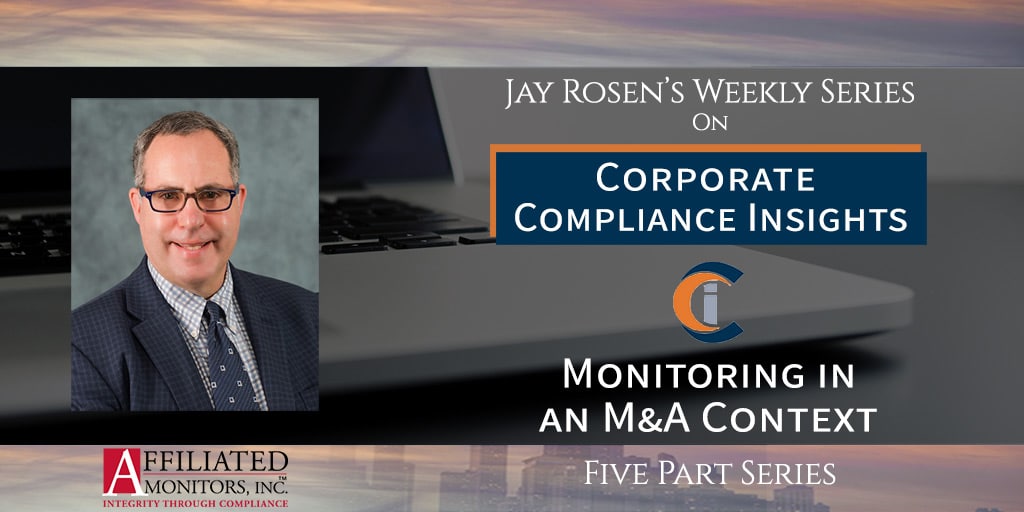
Jay Rosen discusses how to assess ethics and compliance in the context of mergers and acquisitions (M&A), what to look for in an assessment and why you should consider engaging an independent third party.
Part 1: The Whys, Whats and Hows of an Independent Assessment of a Target
“Many issues in the M&A context are driven by the acquired company and usually arise due to the acquiring entity not paying enough attention during the pre-acquisition phase . . . This issue is one of the reasons the (DOJ) has put such important stock in the pre-acquisition phase so that the company needs to perform compliance due diligence and a risk assessment, which will inform the entire process.”
Part 2: Ethical Fit: What Impact Do M&As Have on Both Parties?
“Surprisingly, a company’s ethical and cultural perspective is not often considered in the pre-acquisition phase. Companies spend huge amounts of resources to hire lawyers, investment bankers and accountants for the pre-acquisition phase. They scrub the financials, analyzing income, revenues and expenses, yet they often spend almost no time looking at issues like the ethical culture of the company to be acquired.
Investment bankers and attorneys are anxious to get the deal over the finishing line (and collect their fees), but companies may be making a big mistake by not evaluating the target company’s culture.
Most usually, the senior management of the target company has a very strong financial incentive to push the envelope when it comes to finances and financial projections. To counteract this bias, the acquirer should assess the organization’s human capital . . . an independent third party comes in with credibility and experience, which allows employees at the acquired entity to freely communicate their concerns in a way that is very helpful to the acquiring company.”
Part 3: What’s the Plan? – Planning a Post-Acquisition Merger Strategy
“To plan your post-acquisition merger strategy, first you should start with the Department of Justice (DOJ) and the information contained in various resolution documents on the DOJ’s website. These documents stress that an acquiring entity apply or ascertain that its code of conduct, policies and procedures regarding corruption are consistent with the acquired company’s policies and processes . . . From the pre-acquisition phase, you should be in position to develop your post-closing plan.
The real issue has to do with how a company demonstrates to a government regulator that they have done everything possible to identify risk associated with corruption and misconduct. And if misconduct is identified, has the acquirer undertaken adequate steps to inform the government and make the necessary disclosure?”
Part 4: Oversight of Merged Companies
“There are two distinct phases in the M&A process: pre- and post-acquisition. In each phase, an independent monitor would look at different aspects of it.
What we would expect to see in the integration phase is the type of culture that exists through working with the respective workforces to understand what the combined entities’ culture will be . . . A cultural compatibility is critical for the success of the successor entity. Without that, what frequently happens is that the workforce becomes demoralized because they do not feel like they’ve been part of the process.”
Day 5: How M&A Benefits from Independent Assesment
“M&A work is to some extent a fire drill: Everyone’s working very hard, trying to do a lot in a very short period of time. Over the past 15 years, we’ve participated in numerous proactive and independent monitoring engagements, and we’ve found that people have an easier time opening up in these circumstances. They seem to be more forthcoming when somebody from outside their company comes in and asks questions in a non-threatening way.”



